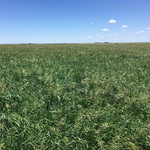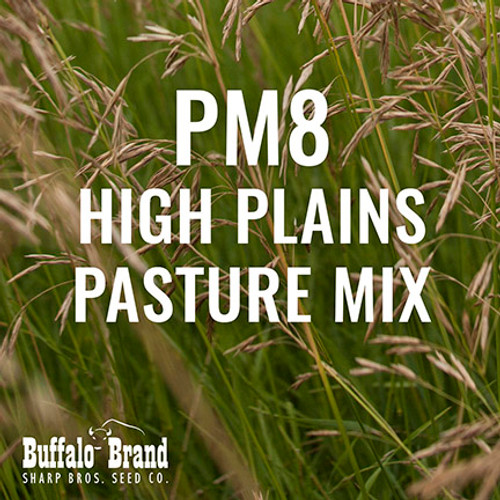Select Quantity (Number of Acres) You're Planting
Sold by 25 Bulk pounds
PM6 is the most popular cool season grazing mix on the central Plains. Presently used on thousands of acres, some stands being decades-old. This blend's broad-based site adaption promotes good grass cover on well-drained upland and swampy lowlands. Highly digestible, high protein forage throughout the season. Widely adapted to irrigated ground of virtually any soil type, from course sands to fine clays or dryland east of Interstate 35. Due to the different seasonal growth characteristics of the grasses within this mix, PM6 is the most productive cool season mix we have been able to design when irrigating through spring, summer and fall. PM6 has remained productive with as little as 2 gallon per minute per acre irrigation systems and responds bountifully with plentiful irrigation or rainfall.
Mix Includes:
Creeping Foxtail
Orchardgrass
Pubescent Wheatgrass
Meadow Brome
Smooth Brome
Growing & Maintenance Tips
Suggested planting rate: 25 pounds per acre.
Planting:
- Seed should be planted 1/8 to 1/4" deep into a firm seed bed with a minimum of clods and air pockets. A grass drill with seed box agitation and depth control is recommended.
- Mid August through September is the best time period for fall seedings
- Mid February through March is the best time period for spring seedings
- Soil prone to wind erosion with inadequate mulch residue, may need a nurse crop - Cool season seeding of Oats - 7 to 15 pounds per acre.
- Beware of planting in locations with high competition from winter annual grassy weeds such as downy brome or cheatgrass and volunteer cereal grains such as wheat, rye or triticale. They are intense competition to seedling cool season grasses.
- Adequate nitrogen, 40 to 50 pounds, should be available in the upper 4 inches of soil when the grass seedlings reach the 3 to 5 leaf stage (approximately 2 to 3 weeks after emergence).
- Scout for army-worm species frequently the first fall and spring. Rarely a problem after grass is established, however relatively small army worm populations can destroy a stand of seedling perennial cool season grass. When detected early, these insects can be economically controlled without any harm to the grass.
- Broadleaf weeds may require treatment with herbicides. We have seen good results without injury to the grass using 24-D and/or dicamba during the establishment season when used according to label instructions.
- If possible, delay harvest of new stands of perennial cool season grasses until haying in the boot to early heading stage (approximately mid to late May). If haying is not possible delay grazing until the grass is 8 inches tall (approximately early May). Allowing the grass to get taller than this is frequently counterproductive when grazing since much of the forage will be lost to animal traffic. During the first year of grass growth, manage to minimize grazing below 6 inches. These tips allow for maximum plant development during the establishment year.










